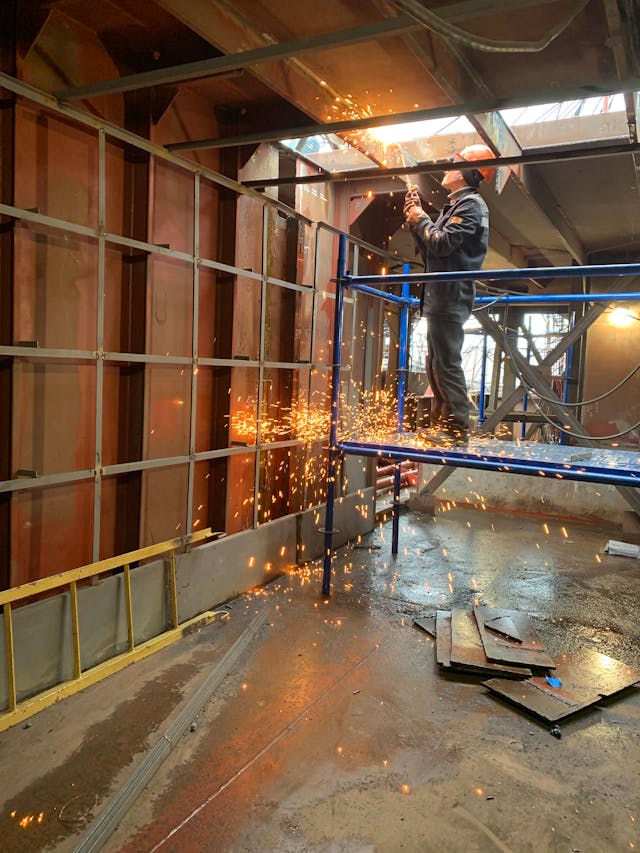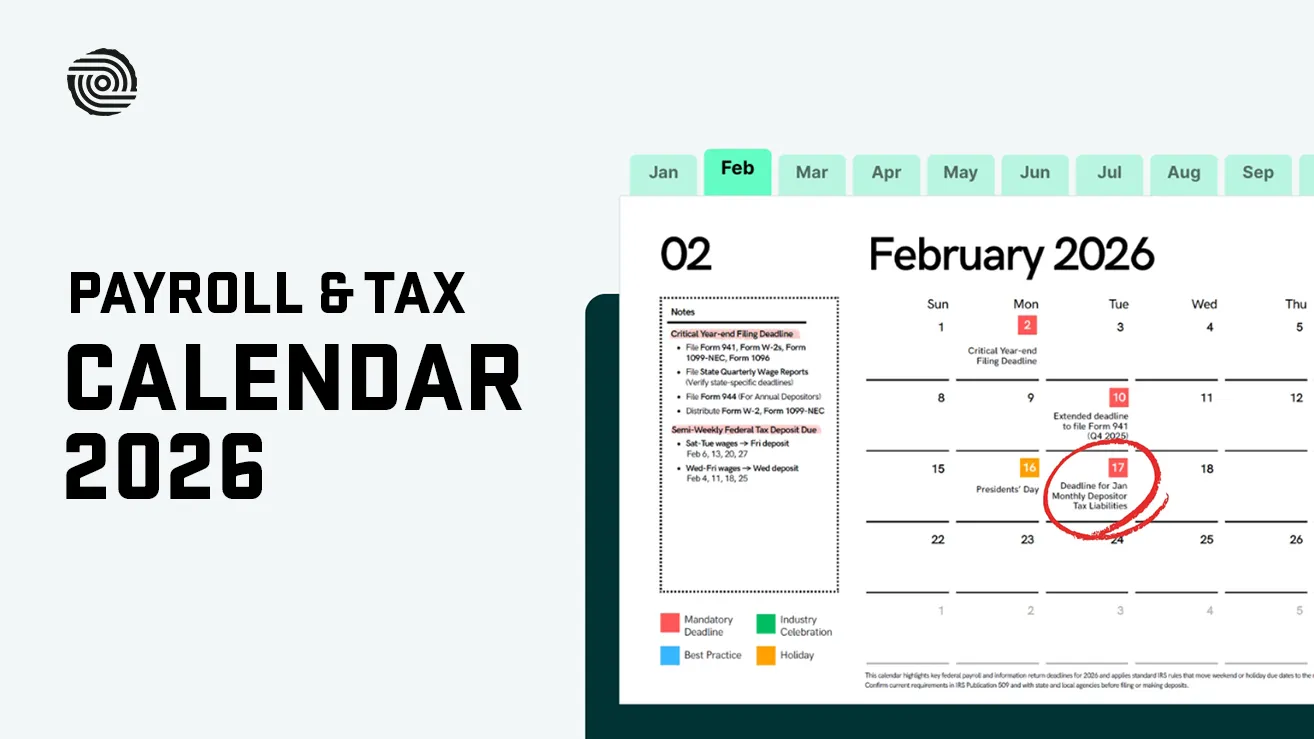How Accurate Time Tracking Can Save California Construction Companies from Costly PAGA Lawsuits
Introduction: A Real-World Wake-Up Call

Imagine you're running a growing construction firm in California. Your jobsites are bustling, deadlines are tight, and you've just landed a major contract. Everything seems set for a record year—until you receive a notice: a former laborer files a lawsuit under California's Private Attorneys General Act (PAGA), claiming you failed to provide proper meal breaks and accurate wage statements. Within weeks, the suit balloons into a class action representing dozens of workers across multiple sites. Legal fees and potential penalties soar into six-figure territory, threatening your company's very survival.
This isn't a hypothetical situation; it's reality for hundreds of California contractors every year. One notable case involved a midsize builder in Los Angeles County that relied on handwritten timesheets with supervisors filling in missing punches from memory. They overlooked missed breaks and had inconsistent records that failed to show the hours worked clearly.
When a PAGA action hit, it revealed a pattern: dozens of employees hadn't received compliant meal breaks or overtime pay. The company eventually paid over $1.4 million in penalties and legal fees—a devastating blow that could have been avoided with better timekeeping and compliance practices.
This story highlights the crucial importance of contractors investing in accurate and robust time-tracking solutions, not only as operational tools but also as legal safeguards against costly lawsuits.
What Is PAGA — and Why Should Construction Companies Be Worried?

The Private Attorneys General Act (PAGA) is a singularly powerful California labor law. Passed in 2004, it empowers employees to act as "private attorneys general," suing employers on behalf of themselves, other employees, and the State of California for labor code violations.
Unlike individual lawsuits, PAGA claims function as representative actions that can dramatically increase the scope of litigation and financial penalties against employers. Typical labor issues targeted under PAGA include missed meal and rest breaks, inaccurate wage statements, off-the-clock work, denied overtime, and employee misclassification.
Why is the construction industry particularly vulnerable?
For one thing, the construction industry relies heavily on hourly labor that often moves between changing worksites with varied supervisors. Scheduling is fluid, and records can be fragmented. This environment creates fertile ground for unintentional compliance errors, making it more challenging to maintain the consistent documentation required by California's strict labor laws.
In short, for California contractors, PAGA is not just a regulatory risk but a very real financial threat.
The Compliance Pressure on California Contractors
California's labor laws are among the strictest in the nation. Employers must ensure that workers receive proper rest and meal breaks, accurate payment for all hours worked, including overtime, and detailed wage statements that comply with exacting state requirements.
Violations carry steep penalties under PAGA. For example, if your business fails to provide a 30-minute meal break within the first five hours of a shift, that employee is entitled to an additional hour of pay as a penalty. Multiply that by dozens of employees and weeks or months of work, and the financial exposure skyrockets.
Plaintiffs' attorneys have increasingly targeted construction firms, which, due to the complexity of job site conditions, may unintentionally leave gaps in compliance. Breaks may go unrecorded, travel time between sites may be unpaid, or wage statements may be missing required details such as hours worked, pay rates, or pay periods.
The rising tide of PAGA lawsuits has created enormous compliance pressure on California contractors to prove beyond doubt that their pay practices meet all legal requirements.
A Deeper Dive Into a Real Construction PAGA Case

Consider a real-world example from 2022 involving a Northern California framing contractor employing around 60 workers. The company used punch cards and Excel spreadsheets for timekeeping — a system rife with issues.
Supervisors sometimes retroactively filled in missing punches from memory at the end of the week, and the timekeeping system did not track break times nor include them on wage statements. After a former carpenter's PAGA claim citing missed meal breaks and inaccurate pay calculations, an attorney-led review uncovered:
- Hundreds of missing or undocumented meal breaks
- Paystubs lacking required details, such as daily hours and overtime rate calculations
- Overtime is paid only after 48 hours per week instead of California's 40-hour threshold
This resulted in a settlement of nearly $750,000 to cover penalties and back pay, as well as substantial defense costs.
The lesson here? Even well-meaning employers who don't deliberately cut corners can face financial devastation due to outdated or inadequate time and payroll tracking.
Why Is Construction Payroll Especially Vulnerable?

Several factors unique to construction amplify payroll compliance risks:
- Multiple Jobsites: Workers frequently move between sites, complicating consistent time logging.
- Rotating Shifts: Varied schedules and overtime scenarios increase payroll complexity.
- Multiple Supervisors: Decentralized oversight can lead to inconsistent enforcement and record keeping.
- High Turnover: New hires may not receive full training on company timekeeping or labor rights during their initial onboarding period.
- Language Barriers: Many workers are non-native English speakers, requiring bilingual systems and clear communication.
- Complex Work Classifications: Differentiating between apprentices, subcontractors, and employees requires careful management and oversight.
Together, these factors make construction time tracking more challenging and compliance errors more frequent unless managed proactively.
Time Tracking: Your First Line of Legal Defense
Accurate time tracking isn't just about paying employees correctly; it can be a company's strongest evidence in defending against costly PAGA claims. Here's why a strong system matters:
- Electronic Audit Trails: Digital timestamps eliminate ambiguity and create clear proof of clock-in/out and breaks.
- Automated Alerts: Modern systems warn of missed breaks or excessive overtime before pay cycles close.
- Payroll Integration: Automatically generate compliant, detailed wage statements required under California law.
- Location Verification: Geo-fencing features confirm workers are on-site during logged hours.
- Language Accessibility: Support for Spanish and other languages reduces errors associated with misunderstandings or inadequate training.
- Data Security: Cloud backups ensure records are maintained even years after employment ends.
When a lawsuit arises, employers can quickly produce transparent and reliable data that proves compliance, dramatically reducing risk and defense costs.
Common Time Tracking Compliance Pitfalls to Avoid
Many contractors unintentionally fall into these traps:
- Reliance on handwritten timesheets makes records vulnerable to inaccuracies or falsification.
- No formal attestation process exists for meal and rest breaks, which may mean that breaks were not taken.
- Disconnected payroll and timekeeping systems create gaps and errors in wage statements.
- Failure to account for travel time or other compensable work activities increases exposure.
- A lack of regular internal audits allows systemic errors to go unnoticed until legal action is taken.
Avoiding these mistakes requires modern, construction-tailored time tracking solutions that prioritize compliance.
Features to Demand in a Construction-Ready Time Tracker
If you're evaluating time-tracking solutions, focus on these key capabilities:
- Mobile-friendly apps so workers and supervisors can clock in/out using smartphones or tablets.
- Real-time, automated break tracking with reminders to help employees comply.
- GPS-enabled location verification to confirm workers are on-site.
- Integration with payroll systems to auto-generate fully compliant wage statements.
- Support for multiple languages and job classifications, including salaried, hourly, apprentice, and subcontractor roles.
- Secure cloud storage and easy data export to support audits or legal discovery.
Choosing the right technology is an investment that pays dividends in risk reduction and operational efficiency.
Steps California Construction Companies Can Take Today
To protect your business from becoming the next PAGA headline, take these critical actions:
- Audit Your Time and Payroll Practices: Review how you track hours, breaks, and generate wage statements to ensure accuracy and compliance. Ensure compliance with California Labor Code requirements.
- Train Supervisors and Workers: Consistently educate your team about the importance of accurate timekeeping and required breaks. Ensure that everyone is aware of their labor rights and the company's expectations.
- Digitize and Centralize Time Tracking: Transition away from paper or spreadsheet systems to integrated digital platforms designed for construction workflows.
- Conduct Periodic Internal Audits: Regularly review your records to identify and correct potential compliance gaps before they lead to lawsuits.
- Document Diligently: Maintain clear, organized records for every shift and employee. Accurate documentation is your best defense.
Don't Be the Next Headline—Act Now
PAGA lawsuits continue to grow in number and severity, with construction companies often caught in the crossfire. California contractors face unprecedented pressure from regulators and plaintiffs' attorneys to maintain flawless wage and hour compliance.
Legal trends indicate settlements and penalties will only increase in the coming years, making it imperative to invest in accurate, construction-specific time-tracking systems today. These solutions not only streamline operations but shield your business from devastating financial risks.
If you haven't reviewed your timekeeping and payroll practices lately, now is the time to do so. A compliance check-up—perhaps with a specialized HR tech provider—can identify risks and help you implement best-in-class protections.
Remember: simple mistakes or outdated processes aren't just operational headaches—they can become million-dollar lawsuits. Select robust, modern tools that safeguard your company, reputation, and bottom line.
Protect Your Construction Business with Lumber Time Tracking

Don’t let outdated time tracking put your company at risk of crippling PAGA lawsuits and class action penalties. Lumber’s time tracking solution is designed specifically for the needs of California construction companies—helping you stay compliant, accurate, and fully protected.
With Lumber, you get:
- Mobile, user-friendly time tracking that works on any device and ensures every clock-in, break, and clock-out is logged and auditable.
- Automated compliance reminders so missed breaks and overtime don’t slip through the cracks.
- Integrated payroll reporting that produces California Labor Code-compliant wage statements.
- Cloud-based recordkeeping—your data is securely stored and available for audits or legal defense whenever needed.
- Bilingual interfaces and jobsite-ready deployment for every type of construction crew.
Don’t wait for a legal wake-up call. Schedule a free compliance audit or request a demo to see how Lumber can transform your time tracking and save your business from costly legal exposure.
Lorem ipsum dolor sit amet, consectetur adipiscing elit. Donec ullamcorper mattis lorem non. Ultrices praesent amet ipsum justo massa. Eu dolor aliquet risus gravida nunc at feugiat consequat purus. Non massa enim vitae duis mattis. Vel in ultricies vel fringilla.
Introduction
Mi tincidunt elit, id quisque ligula ac diam, amet. Vel etiam suspendisse morbi eleifend faucibus eget vestibulum felis. Dictum quis montes, sit sit. Tellus aliquam enim urna, etiam. Mauris posuere vulputate arcu amet, vitae nisi, tellus tincidunt. At feugiat sapien varius id.
Eget quis mi enim, leo lacinia pharetra, semper. Eget in volutpat mollis at volutpat lectus velit, sed auctor. Porttitor fames arcu quis fusce augue enim. Quis at habitant diam at. Suscipit tristique risus, at donec. In turpis vel et quam imperdiet. Ipsum molestie aliquet sodales id est ac volutpat.

Ipsum sit mattis nulla quam nulla. Gravida id gravida ac enim mauris id. Non pellentesque congue eget consectetur turpis. Sapien, dictum molestie sem tempor. Diam elit, orci, tincidunt aenean tempus. Quis velit eget ut tortor tellus. Sed vel, congue felis elit erat nam nibh orci.
Dolor enim eu tortor urna sed duis nulla. Aliquam vestibulum, nulla odio nisl vitae. In aliquet pellentesque aenean hac vestibulum turpis mi bibendum diam. Tempor integer aliquam in vitae malesuada fringilla.
Elit nisi in eleifend sed nisi. Pulvinar at orci, proin imperdiet commodo consectetur convallis risus. Sed condimentum enim dignissim adipiscing faucibus consequat, urna. Viverra purus et erat auctor aliquam. Risus, volutpat vulputate posuere purus sit congue convallis aliquet. Arcu id augue ut feugiat donec porttitor neque. Mauris, neque ultricies eu vestibulum, bibendum quam lorem id. Dolor lacus, eget nunc lectus in tellus, pharetra, porttitor.
Ipsum sit mattis nulla quam nulla. Gravida id gravida ac enim mauris id. Non pellentesque congue eget consectetur turpis. Sapien, dictum molestie sem tempor. Diam elit, orci, tincidunt aenean tempus. Quis velit eget ut tortor tellus. Sed vel, congue felis elit erat nam nibh orci.
Mi tincidunt elit, id quisque ligula ac diam, amet. Vel etiam suspendisse morbi eleifend faucibus eget vestibulum felis. Dictum quis montes, sit sit. Tellus aliquam enim urna, etiam. Mauris posuere vulputate arcu amet, vitae nisi, tellus tincidunt. At feugiat sapien varius id.
Eget quis mi enim, leo lacinia pharetra, semper. Eget in volutpat mollis at volutpat lectus velit, sed auctor. Porttitor fames arcu quis fusce augue enim. Quis at habitant diam at. Suscipit tristique risus, at donec. In turpis vel et quam imperdiet. Ipsum molestie aliquet sodales id est ac volutpat.
Mi tincidunt elit, id quisque ligula ac diam, amet. Vel etiam suspendisse morbi eleifend faucibus eget vestibulum felis. Dictum quis montes, sit sit. Tellus aliquam enim urna, etiam. Mauris posuere vulputate arcu amet, vitae nisi, tellus tincidunt. At feugiat sapien varius id.
Eget quis mi enim, leo lacinia pharetra, semper. Eget in volutpat mollis at volutpat lectus velit, sed auctor. Porttitor fames arcu quis fusce augue enim. Quis at habitant diam at. Suscipit tristique risus, at donec. In turpis vel et quam imperdiet. Ipsum molestie aliquet sodales id est ac volutpat.
- Lectus id duis vitae porttitor enim gravida morbi.
- Eu turpis posuere semper feugiat volutpat elit, ultrices suspendisse. Auctor vel in vitae placerat.
- Suspendisse maecenas ac donec scelerisque diam sed est duis purus.

Lectus leo massa amet posuere. Malesuada mattis non convallis quisque. Libero sit et imperdiet bibendum quisque dictum vestibulum in non. Pretium ultricies tempor non est diam. Enim ut enim amet amet integer cursus. Sit ac commodo pretium sed etiam turpis suspendisse at.
Tristique odio senectus nam posuere ornare leo metus, ultricies. Blandit duis ultricies vulputate morbi feugiat cras placerat elit. Aliquam tellus lorem sed ac. Montes, sed mattis pellentesque suscipit accumsan. Cursus viverra aenean magna risus elementum faucibus molestie pellentesque. Arcu ultricies sed mauris vestibulum.
Critical Construction Compliance | Awareness Week
Mar 16, 2026
Apr 15, 2026
Nov 30, 2026
Dec 15, 2026
Essential resources for contractors







.webp)
